True efficiency in service operations begins when asset data and daily workflows are fully connected. Without that link, teams waste valuable time searching for details like who last used a device or when it was repaired instead of resolving customer issues. Disorganized assets slow progress and quietly increase costs across the business.
The solution is integration. When asset tracking lives within the same platform as your projects and service operations, your team gains the context to act faster and deliver better service outcomes.
In this practical guide, you’ll learn how modern asset tracking software supports efficient service operations, the features that make a real difference, and how to create a connected system that delivers measurable ROI in 2026.
Key takeaways
- Connect assets and service operations: integrate asset data directly into the service workflow to give teams full context and resolve issues faster.
- Use monday service: manage assets, projects, and service requests in one connected platform to create a seamless, data-driven operation.
- Shift from reactive to proactive: use real-time analytics to anticipate maintenance needs, prevent downtime, and guide smarter purchasing decisions.
- Remove manual chaos: replace spreadsheets and paper logs with a single source of truth for all assets, improving accuracy and scalability.
- Accelerate adoption: modern platforms offer fast setup and mobile scanning tools so teams can start tracking within weeks without costly hardware.
How unified data transforms service delivery and operational efficiency
Asset tracking software establishes a single source of truth for an organization’s physical equipment, offering a live, comprehensive view of each item’s location and performance. It replaces disorganized spreadsheets and manual guesswork with a unified system designed to monitor assets such as laptops, tools, and vehicles throughout their entire lifecycle. The result is the transformation of a chaotic equipment closet into a perfectly organized, searchable inventory.
This system directly enhances service delivery. When a support ticket is created for a faulty device, an agent can instantly access its complete history, including maintenance records, warranty information, and user assignment, all consolidated in one interface. Arming the team with this context empowers them to resolve issues with greater speed and confidence.
By integrating asset data directly into service workflows, logistics evolve from a burdensome chore into a strategic advantage. This allows for the anticipation of maintenance needs before failures occur, smarter purchasing decisions informed by performance data, and the construction of a truly efficient operational backbone that keeps the entire organization running smoothly.
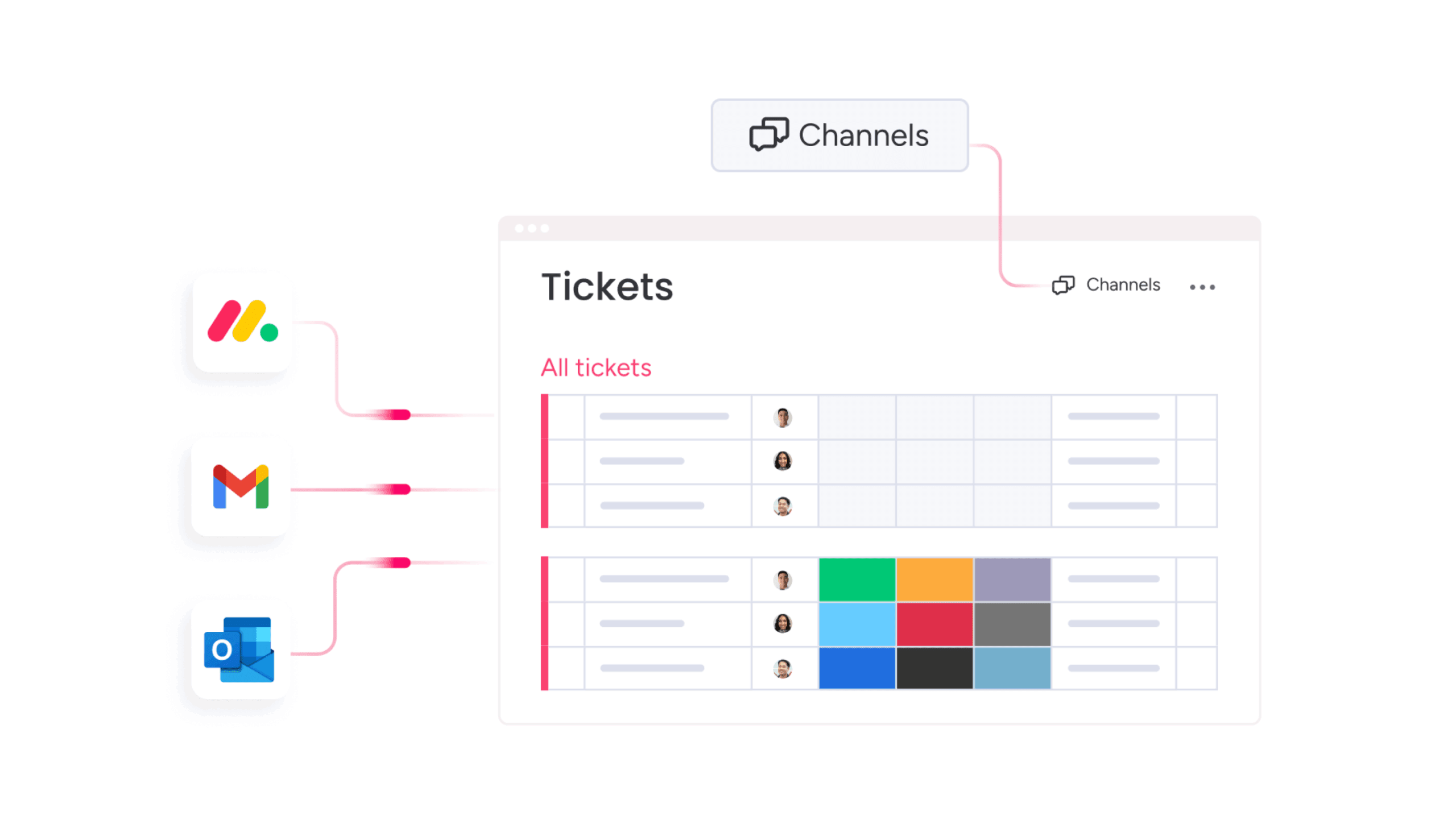
A unified platform as a single source of truth
When every component of your service operation resides on a single, intuitive platform, the complexity of managing disparate systems vanishes. This consolidation creates a single source of truth, empowering everyone to resolve issues more rapidly and deliver service that scales seamlessly with your success.
Built-in AI and automations absorb the burden of repetitive tasks, such as routing tickets and dispatching updates, freeing your experts to concentrate on solving the complex challenges that truly matter. This strategic allocation of human capital allows your team to cultivate stronger customer relationships and navigate intricate problems, while the platform ensures operational continuity in the background.
Raw data is transformed into clear, real-time analytics that pinpoint what is functioning effectively and where strategic focus is needed next. Armed with these insights, you can transition from a reactive, firefighting posture to a proactive, strategic one, providing everything necessary to optimize team performance and continuously elevate service delivery.
The asset tracking features that actually move the needle
The most effective platforms integrate asset tracking so seamlessly that it feels invisible, removing the administrative burden entirely. This is achieved through smart technologies like simple barcode scanning and built-in AI, which automatically capture and organize asset information, converting hours of manual data entry into a process completed in seconds.
- Real-time dashboards and automated alerts: driving immediate action and preventing issues.
- Seamless integrations: dismantling information silos by connecting existing tools, from help desks to HR systems.
- Role-based permissions and transparent audit trails: securing critical data without impeding productivity.
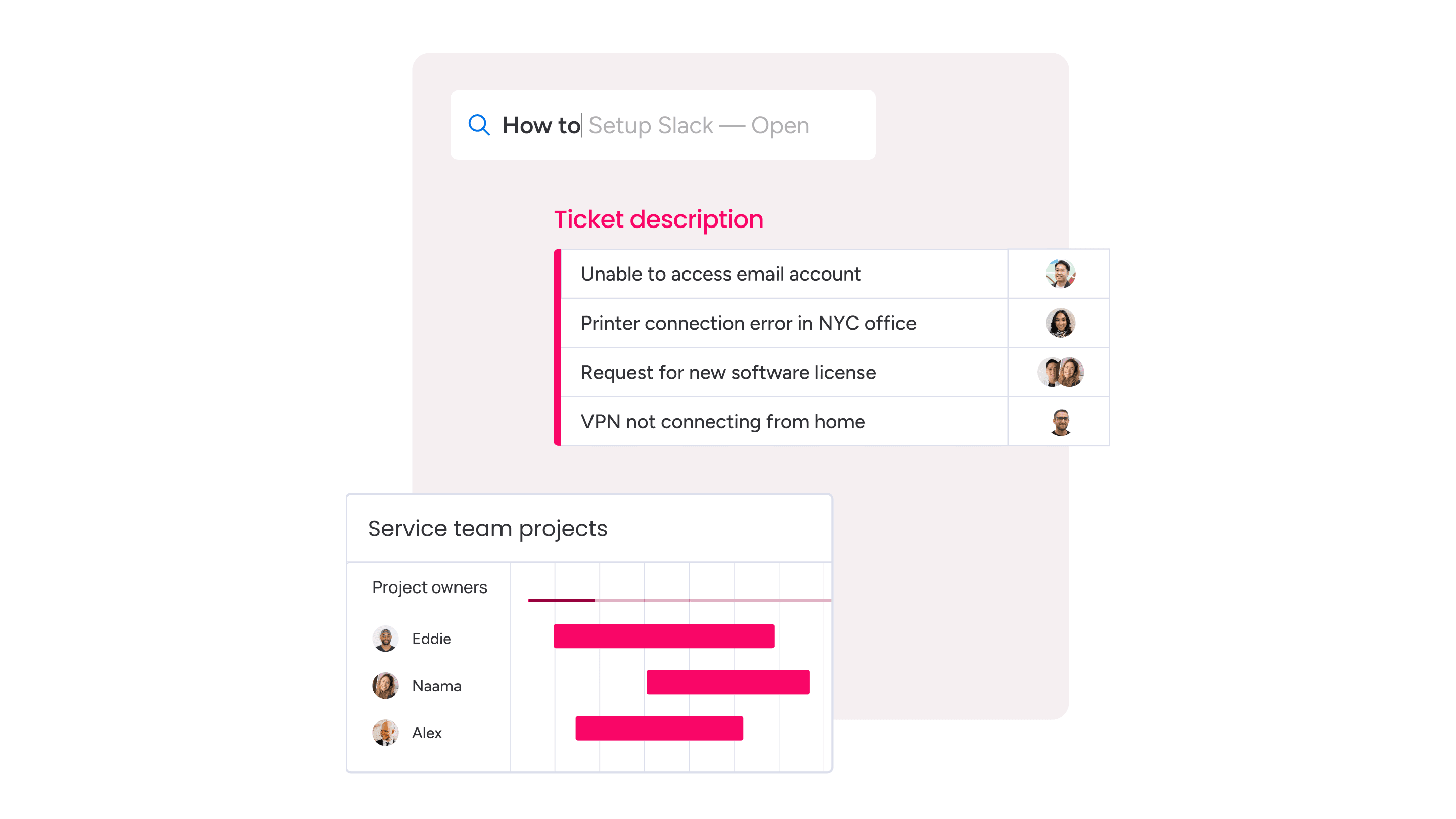
Why move beyond spreadsheets and manual methods?
The attempt to manage service requests within a fragile spreadsheet is a common but precarious practice. Teams often find themselves juggling paper logs and siloed digital files, resulting in a patchwork system where crucial information is frequently lost or inaccessible. This familiar struggle, however, does not have to be the default reality.
These manual methods are not just inefficient: they actively impede progress and introduce costly errors. When information is scattered and outdated, teams are compelled to make critical decisions with incomplete data, rendering the delivery of consistently excellent service nearly impossible.
The fundamental challenge is that such chaotic systems cannot scale alongside a growing organization. Platforms like monday service offer a definitive solution, replacing scattered approaches with a single, unified digital workspace that aligns everyone. By consolidating all work and automating tedious processes, it empowers your team to focus on their core mission: delivering exceptional service, fast.
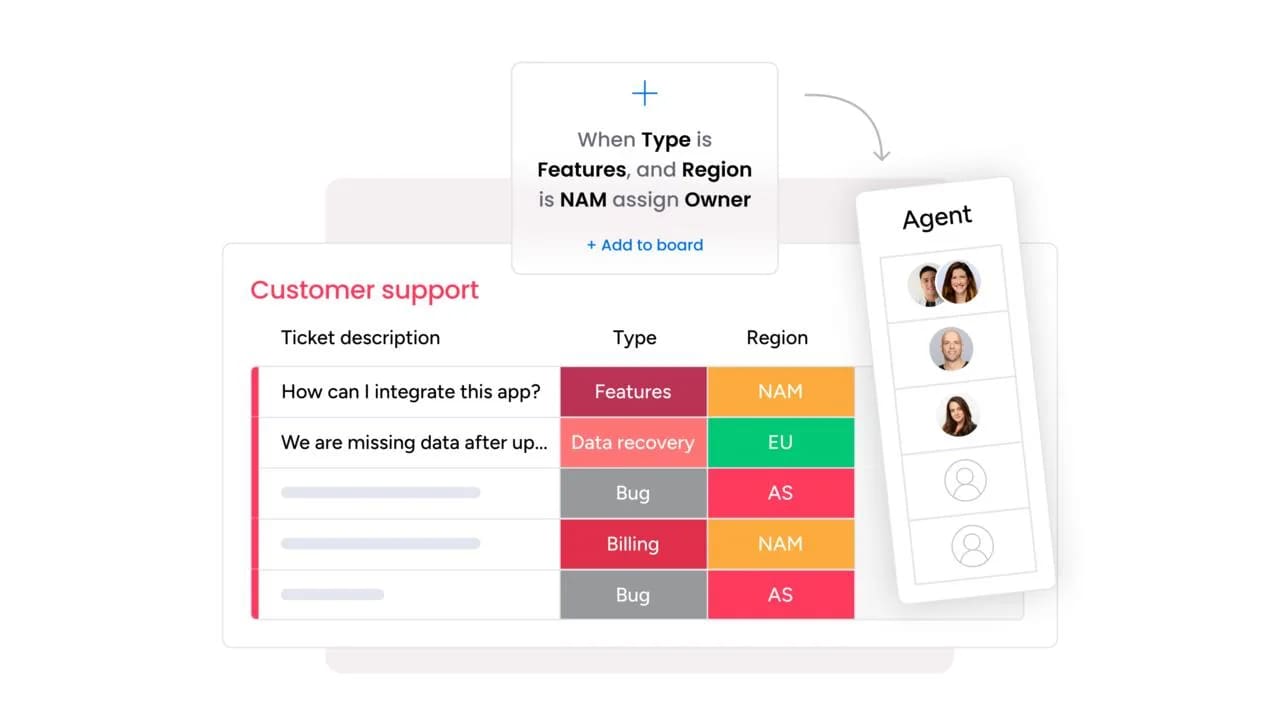
Top asset tracking solutions compared
Selecting an asset tracker is a key part of enterprise asset management. It involves providing your team with a complete understanding of operational interconnectedness. The most effective platforms do not function in isolation but integrate directly into your service workflows, making it simple for everyone to see how assets influence every support ticket.
A highly effective platform goes beyond simple inventory functions by converting asset data into strategic service advantages. While many platforms successfully manage item counts and locations, a solution like monday service excels at connecting the dots, linking an asset’s entire lifecycle directly to service requests, maintenance schedules, and cross-team projects
Below we’ve compared the top features and key strengths of some of the most popular asset tracking solutions.
| Platform name | Best for | Key strength | Starting price range | Best for teams that: |
|---|---|---|---|---|
| monday service | Service management integration | AI-powered automation, cross-departmental collaboration | $$ | Require broader platform adoption |
| Asset Panda | Enterprise asset management | Comprehensive lifecycle management, strong compliance | $$$ | Higher learning curve |
| AssetTiger | Small organizations, budgets | Free tier, simple interface | Free/$ | Limited advanced features |
| Sortly | Visual-first, small inventories | Photo-based identification, intuitive mobile app | $ | Limited enterprise features |
| Wasp AssetCloud | Barcode/RFID environments | Hardware integration, barcode/RFID focus | $$ | Requires dedicated hardware investment |
| SafetyCulture | Safety/operations integration | Inspection workflow integration, mobile-first design | $ | Limited standalone asset management |
1. monday Service
By combining intuitive design with powerful AI automation, monday ervice redefines how organizations approach asset tracking. Built on the flexible monday Work OS, it is ideally suited for teams needing to manage both physical and digital assets without the complexity of traditional systems. The platform natively connects asset management with broader service operations, creating a single, unified workspace.
Use case: monday service delivers comprehensive asset tracking that integrates seamlessly with your existing service workflows, eliminating the need for scattered spreadsheets and disconnected systems.
Key features:
- QR code generation and mobile scanning for instant asset check-in/check-out processes.
- AI-powered automation that categorizes assets and extracts information from documents automatically.
- Real-time dashboards with customizable views to monitor asset status, utilization, and maintenance schedules.
Pricing:
- Free: $0 forever (up to two seats, three boards, basic features).
- Basic: $9/month per seat billed annually (unlimited items, 5GB storage, priority support).
- Standard: $12/month per seat billed annually (timeline views, automations, integrations).
- Pro: $19/month per seat billed annually (private boards, time tracking, advanced automations).
- Enterprise: contact sales for pricing (enterprise-scale features, advanced security).
- Minimum three users required; yearly plans save 18%.
Why it stands out:
- Cross-departmental collaboration connects asset management directly with ticketing, projects, and service delivery workflows.
- No-code customization lets you adapt asset tracking workflows without technical expertise or lengthy implementations.
- Integrated lifecycle management handles everything from asset procurement and deployment to maintenance and retirement in one platform.
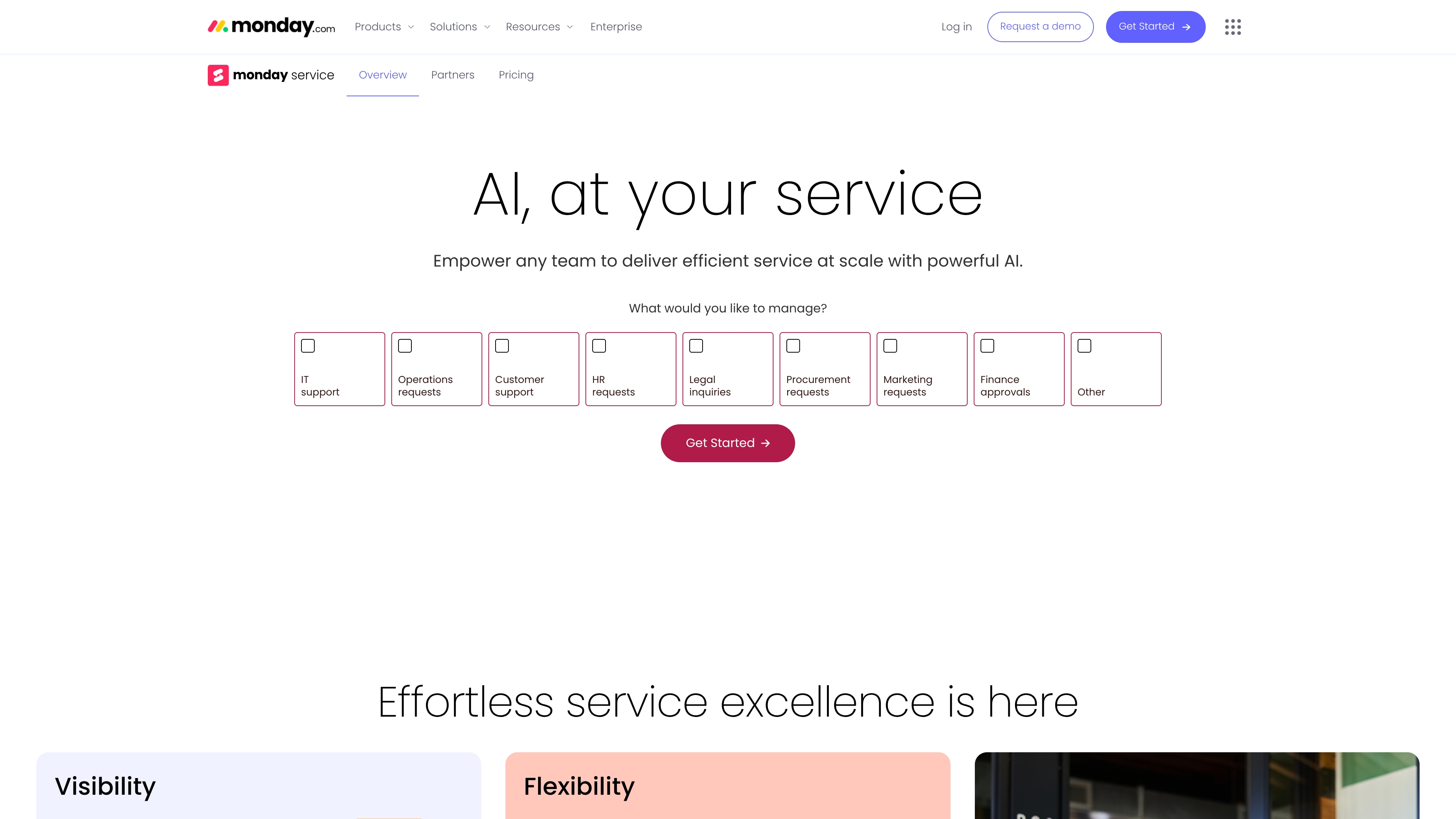
2. Asset Panda
Asset Panda provides a centralized platform for all asset information, offering real-time visibility across your organization. It achieves this by using mobile barcode scanning and integrated GPS location tracking. This eliminates the need for scattered data and ensures every team member knows the exact status and location of critical equipment.
Key features:
- Customizable no-code platform: to adapt to any workflow without requiring IT support or lengthy implementations.
- Mobile app with built-in scanning: to eliminate the need for dedicated hardware using existing smartphones for barcode and QR code scanning.
- Comprehensive lifecycle tracking: to handle asset procurement, maintenance, and disposal with automated alerts.
Pricing:
- Custom pricing: based on the number of assets tracked rather than users.
- Specific pricing details: require requesting a custom quote or scheduling a demo with their team.
Considerations:
- Best for teams that: prioritize deep customization and are prepared for a detailed initial setup.
- Steep learning curve: requires a dedicated learning phase due to extensive customization options.
- Limited offline functionality: impacts teams working in remote locations with intermittent connectivity.
3. AssetTiger
AssetTiger helps organizations gain visibility and control over their physical assets through an intuitive cloud-based platform that requires no software installation.
Key features:
- Barcode and QR code scanning: to allow quick asset identification and updates in the field via mobile apps.
- Complete check-in/check-out system: to track full asset movement history with automated email alerts.
- Maintenance scheduling: to provide preventive maintenance reminders and detailed maintenance histories.
Pricing:
- Free: up to 250 assets with two users.
- Basic: $20/month for 500 assets with unlimited users.
- Core: $40/month for 2,500 assets with unlimited users.
- Advanced: $75/month for 10,000 assets with unlimited users.
- Pro: $140/month for 50,000 assets with unlimited users.
- Enterprise: $275/month for 250,000 assets with unlimited users.
- Ultimate: $500/month for 500,000 assets with unlimited users.
- Annual billing: discounts on all paid plans, moreover no per-user charges or hidden fees.
Considerations:
- Limited advanced features: GPS tracking, RFID support, or automated network asset discovery.
- No integrations: with other business systems like ERP or helpdesk software, which can limit workflow automation.
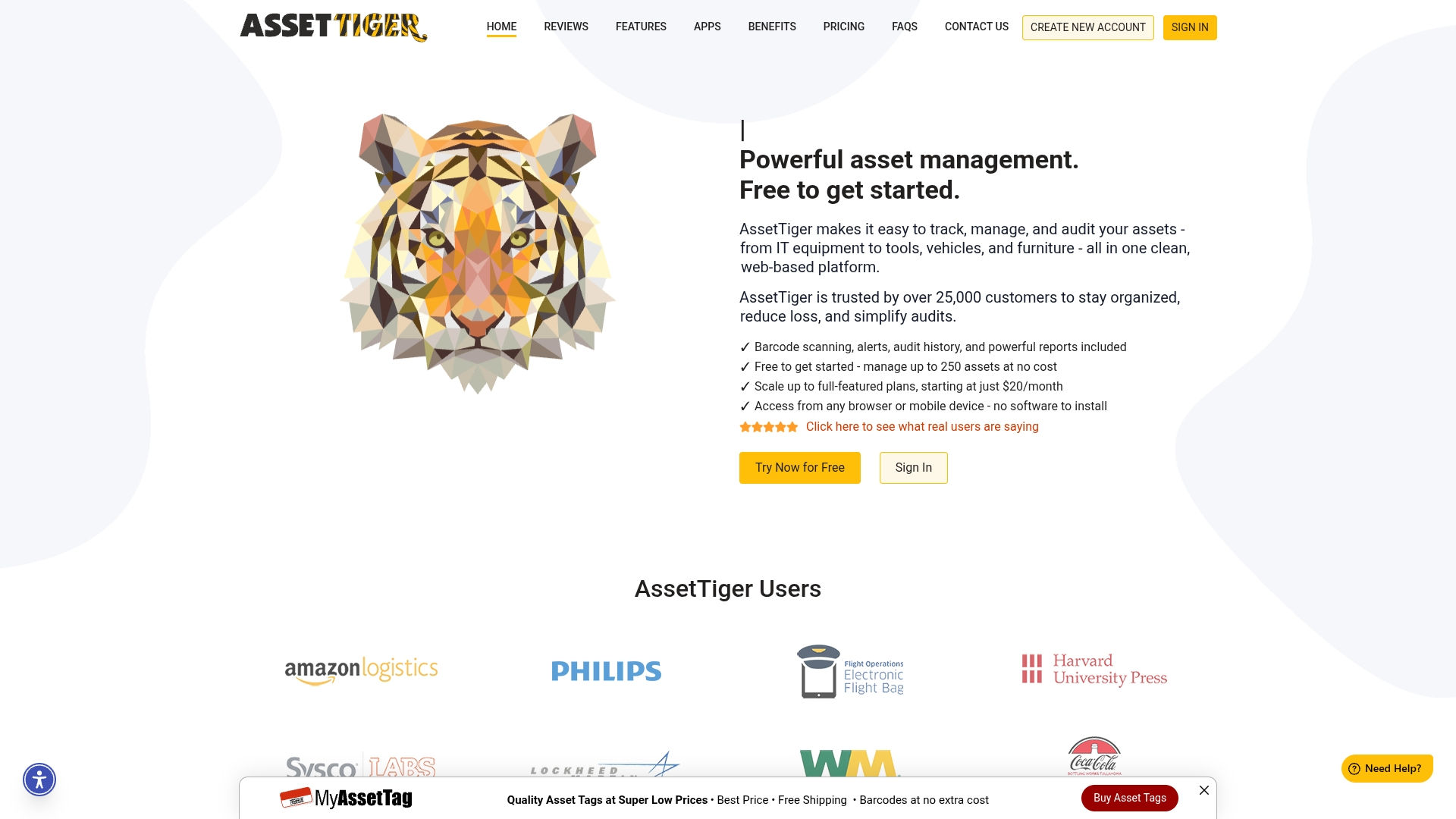
4. Sortly
Sortly helps businesses visually track and organize assets like equipment, tools, and inventory using photos and customizable folders accessible from any device.
Key features:
- Photo-based asset identification: to allow up to eight high-resolution images per item for detailed visual records.
- Built-in barcode and QR code scanning: to offer custom label generation alongside identification.
- Offline mobile access: to provide uninterrupted service with automatic sync when connectivity returns.
Pricing:
- Free: $0/month (100 items, one user).
- Advanced: $49/month or $24/month first year if billed annually (500 items, two users, unlimited QR labels).
- Ultra: $149/month or $74/month first year if billed annually (2,000 items, five users, purchase orders).
- Premium: $299/month or $149/month first year if billed annually (5,000 items, eight users, QuickBooks integration).
- Enterprise: custom pricing (10,000+ items, 12+ users, API access).
Considerations:
- Limited integrations: may require manual data entry for data outside of QuickBooks Online.
- Lacks advanced enterprise features: RFID tracking or complex depreciation calculations.
5. Wasp AssetCloud
Wasp AssetCloud provides a turnkey asset tracking solution that combines cloud-based software with barcode scanners, RFID technology, and asset tags from a single vendor to streamline asset management across multiple industries.
Key features:
- Automated check-in/check-out system: to assign assets instantly to employees, customers, or vendors.
- RFID integration: to process asset transactions up to 20 times faster than manual methods.
- Multi-quantity asset tracking: to manage identical items like chairs or keyboards under single asset numbers.
Pricing:
- Pricing information: contact Wasp Barcode Technologies.
- Pricing variety: based on features, user count, and hardware requirements.
- On-premise versions: include an 18% annual maintenance and support fee after the first year.
Considerations:
- Requires dedicated hardware: like barcode scanners and RFID equipment.
- Mobile app performance issues: reported on newer devices, with some customers experiencing lag and crashes.
![]()
6. SafetyCulture
SafetyCulture provides a unified platform where asset tracking connects directly to safety inspections and maintenance workflows, making it ideal for organizations that need to maintain compliance while optimizing asset performance.
Key features:
- QR code and NFC tag integration: to allow instant asset identification and inspection initiation.
- Preventative maintenance scheduling: to send automated alerts based on time intervals, usage hours, or odometer readings.
- Real-time fleet telematics: to provide vehicle tracking, route optimization, and driving behavior monitoring.
Pricing:
- Free: $0/month for up to ten seats with five active templates and three years of data history.
- Premium: $24/seat/month (billed annually) with unlimited templates, advanced analytics, and real-time telematics.
- Enterprise: custom pricing for large organizations with site-based options available.
- Lite Seat add-on: from $5/seat/month for occasional users with limited inspection access.
Considerations:
- Limited standalone asset management capabilities: compared to dedicated CMMS platforms, requiring integrations for more complex maintenance workflows
- Per-user pricing model: can become expensive for large teams, especially when compared to competitors offering site-based pricing options.

How to choose the right solution in 2026
The selection of a service solution should be viewed as a strategic partnership for your team’s growth, not just a feature comparison. The industry is evolving from isolated ticketing systems to integrated platforms that unify teams for efficient problem solving. The objective is to adopt a system that resolves current operational friction while paving the way for future improvements.
Your focus should be on capabilities that deliver tangible daily benefits: intuitive design, intelligent automation for repetitive tasks, and seamless connectivity with existing tools. A well-chosen platform should feel custom-built for your needs, simplifying complex operations and providing real-time insights without requiring specialized analytical skills. This is the power of a unified platform, connecting service delivery to the entire organization on one collaborative digital workspace.
Ultimately, the optimal choice is a platform that scales with your ambitions rather than constraining them. Envision a system capable of handling increased ticket volume, more team members, and expanded locations without performance degradation, all while delivering a clear return on investment through enhanced efficiency.
Try monday serviceMaximizing ROI and reducing costs
Achieving a significant return on investment does not necessitate a massive initial expenditure. A strategic approach involves focusing on your most critical assets first, allowing you to demonstrate value quickly and build the momentum needed to scale the initiative across the organization. The key is to start smart to ensure a strong finish.
Standardizing processes from the outset is crucial for success. By establishing clear, consistent rules for naming and categorizing assets, you maintain clean, actionable data. This discipline empowers the entire team to contribute to accurate record-keeping, recognizing that the system’s strength depends on the customers’ diligence.
With a solid foundation, you can leverage built-in AI to proactively flag maintenance needs and optimize asset utilization. Real-time analytics enable the immediate tracking of key performance metrics, facilitating smarter, data-driven decisions on the fly. This methodology not only reduces costs but also builds a service operation that continuously learns and improves.
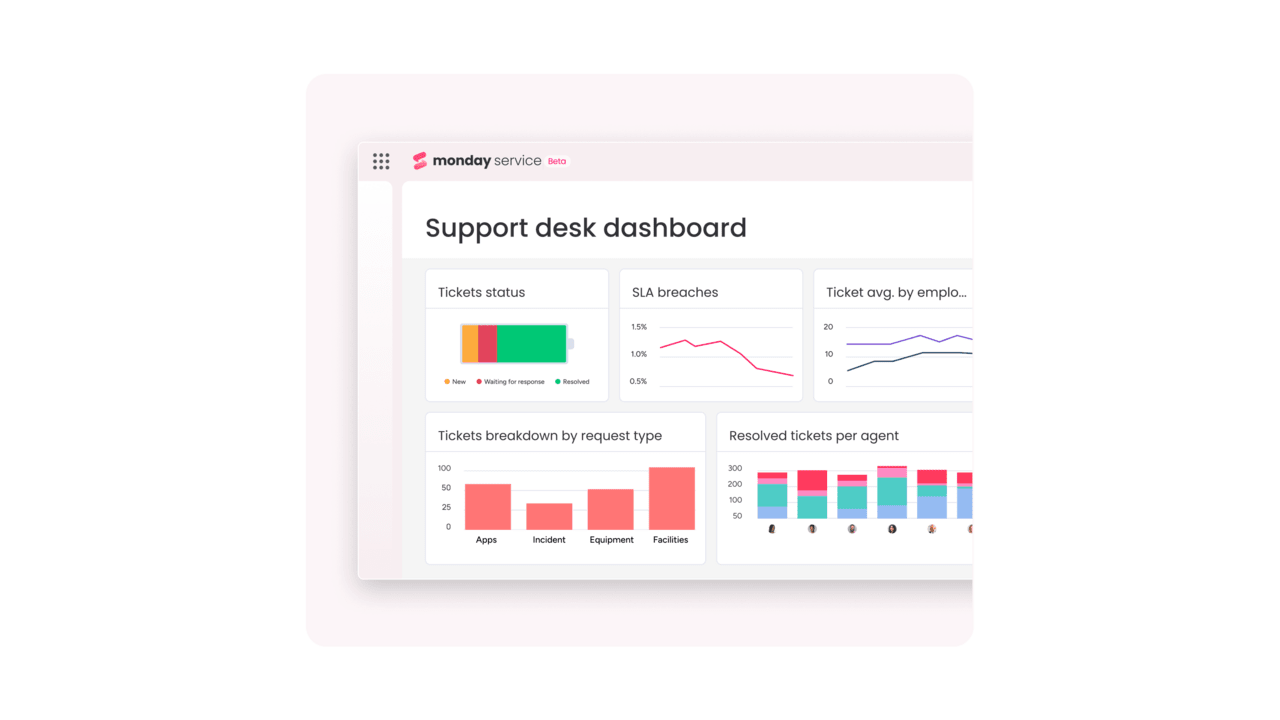
How to get started today
Transitioning to a modern asset management system is easiest when approached in clear, manageable steps. Focus first on current pain points and customer adoption to ensure your implementation is successful.
Then follow these steps:
- Assess the current state: identify existing tracking methods (spreadsheets, paper, etc.) and pinpoint areas for immediate improvement.
- Map key workflows: gather input from daily users to ensure the new system supports all critical processes and assets.
- Execute a pilot program: gain rapid customer feedback and refine the system before launching it organization-wide.
- Unify with modern platforms like monday service: connect asset management directly into your entire service workflow, transforming disparate data into a single, collaborative hub.
The content in this article is provided for informational purposes only and, to the best of monday.com’s knowledge, the information provided in this article is accurate and up-to-date at the time of publication. That said, monday.com encourages readers to verify all information directly.
Try monday serviceFrequently asked questions
What types of assets can be tracked with asset tracking software?
You can track nearly any physical item, including IT equipment, vehicles, machinery, and furniture. Most platforms also support custom categories, so you can track whatever is unique to your team's operations.
How much does asset tracking software typically cost?
Pricing varies widely based on features and your number of users, with most platforms charging a monthly per-user fee. The investment often pays for itself through improved asset visibility and reduced loss.
Can asset tracking software work without internet connectivity?
Yes, many platforms offer offline mobile apps that sync data automatically once a connection is restored. This allows field teams to update asset information from anywhere without interruption.
What's the difference between asset tracking and inventory management software?
Asset tracking monitors individual, high-value items like laptops or vehicles throughout their lifecycle. Inventory management, on the other hand, tracks quantities of consumable goods for replenishment.
How long does it take to implement asset tracking software?
Implementation can take anywhere from a few days for simple setups to several weeks for complex deployments. Most small to mid-sized teams are up and running within two to four weeks.
Do I need special hardware to start tracking assets?
No, you can start immediately using a smartphone's camera to scan QR codes or barcodes. Dedicated scanners can improve efficiency for high-volume needs but aren't essential to begin.
 Get started
Get started 
